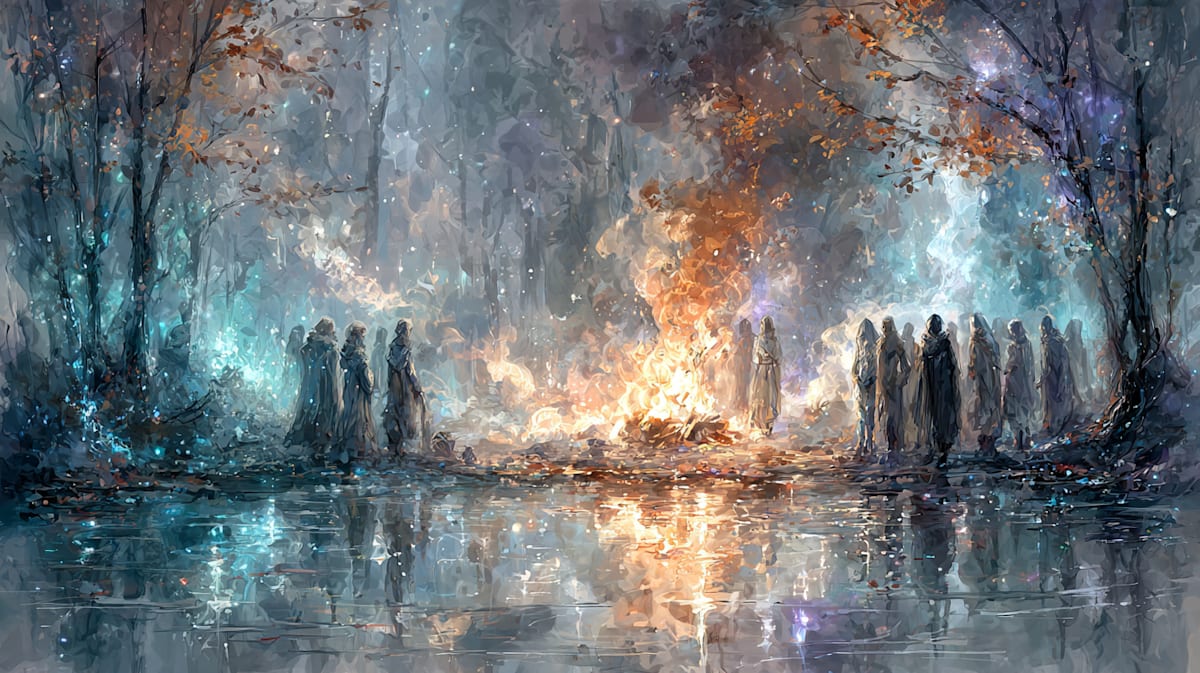Halloween isn’t about pretending to be someone else.
It’s about finally being allowed to try.
Once a year, the world gives us permission to experiment—to wear the crown, the claws, the cape, or the chaos—and nobody asks for an explanation. Maybe that’s why I’ve always loved this season: it’s the one night we can step into a story without apology.
The Art of Becoming Someone Else
Long before we turned October into a carnival of candy and costumes, the ancient Celts wore disguises at Samhain to confuse wandering spirits. Faces were blackened with ash, masks carved from bark or bone, and every figure in the firelight became both human and ghost.
Back then, it wasn’t about style—it was survival. The dead were said to walk, and hiding among them was the safest choice. But the magic stuck.
Thousands of years later, we’re still putting on masks—but now it’s for fun. And in that small shift, something remarkable happened: disguise became art. Halloween transformed into a night of creative permission. We don’t hide in fear anymore; we explore for joy.
Masks don’t conceal—they expand. They let us test edges of identity, play with aesthetics, try on confidence or chaos. Writers do this every day through their characters; Halloween just lets everyone else join in.
The Monster as Muse
Every generation invents its own monsters, and every monster tells us what the world is afraid of—or secretly fascinated by. The sea witch, the vampire, the selkie, the revenant… all once stood for something untamed.
But now? We identify with them. We see parts of ourselves in their defiance. The creature is no longer just the threat at the door; sometimes it’s the person who finally opens it.
In my own stories, the monstrous is often the most human.
Morwenna Brightwood’s selkie form isn’t a curse—it’s her reclaimed identity.
Amara Nocturne’s undead heart isn’t horror—it’s resilience in the face of loss.
And Dain Finnlan, the smuggler who thrives in the shadows, isn’t lawless—he’s loyal to the kind of freedom daylight can’t afford.
The monster gives us permission to be complicated. To embrace our rough edges, our desires, our power. To become—if only for a night—something beautifully uncontainable.
The Joy of Mischief
Of course, every bit of magic needs a little mayhem.
In old Celtic lore, the nights before All Hallows were times of sanctioned mischief—fae pranks, toppled carts, swapped gates, a touch of chaos before the long dark set in. Mischief Night wasn’t cruelty; it was catharsis. A reminder that a little disorder keeps life interesting.
Modern Halloween keeps that spark alive. The trick in “trick-or-treat” is just a softened echo of an ancient truth: we need moments where rules bend and imagination rules.
And maybe that’s why I love this season as both writer and reader. It’s a space where creation thrives in the cracks—where we remember that every story begins with a little trouble. Some people egg houses. I throw my characters into storms.
Creativity in Costume
The beauty of Halloween is that it doesn’t demand honesty—it offers freedom.
You can be a hero, a ghost, a queen, or an entirely new creature born of your own invention. It’s not about revealing your inner truth; it’s about exploring all the possible ones. For one night, we trade the mirror for a stage, and imagination becomes a safe rebellion.
Maybe that’s why the masks never really come off for writers. We just change the stories they live in.
So go on—pick up your lantern, choose your disguise, and step into the night. Pretending is just another word for practicing possibility.
